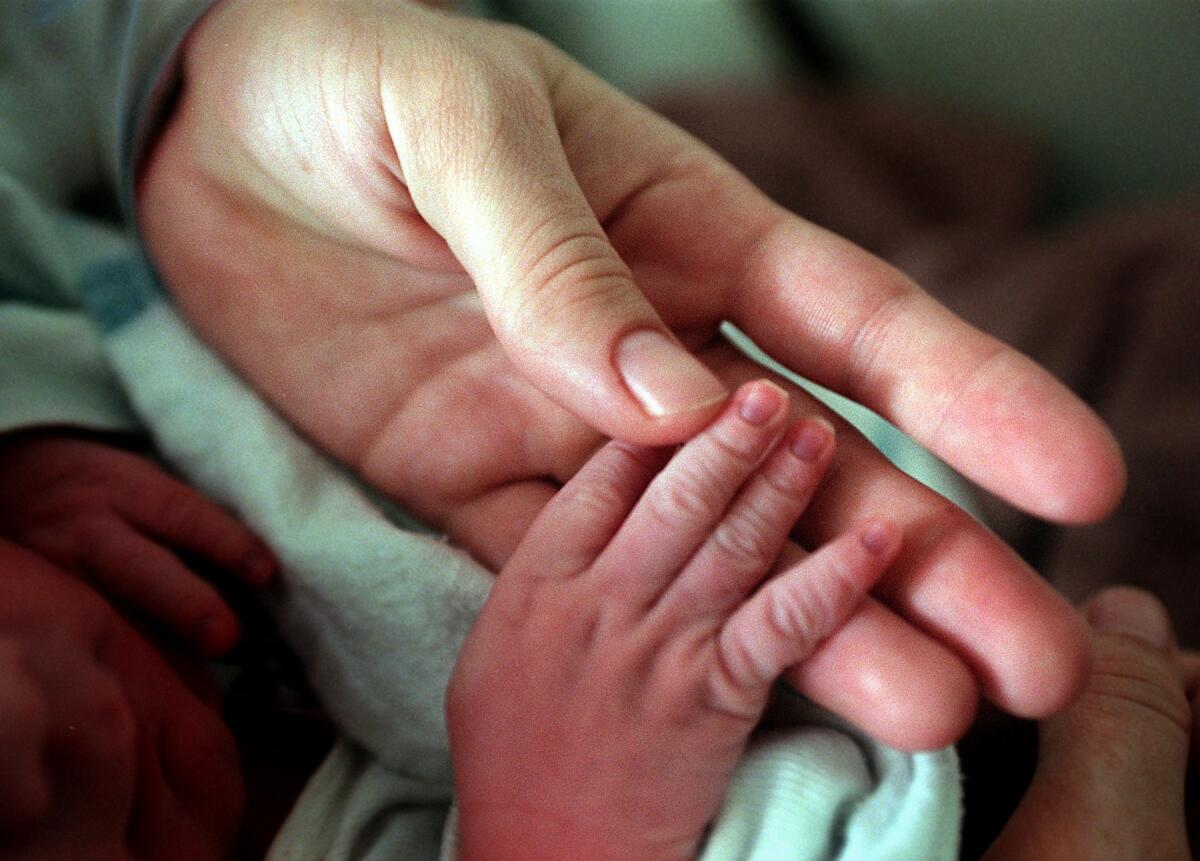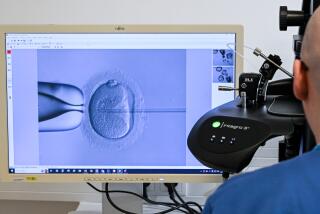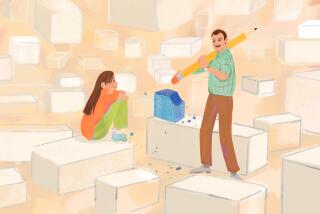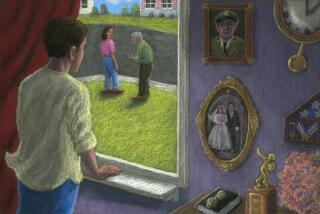Op-Ed: My dad the sperm donor wanted to remain anonymous. That’s almost not an option anymore

- Share via
Alongside Dr. Seuss, my mother read “Our Story: How We Became a Family” to me. Published by the Donor Conception Network, the book gently told me that a “very kind man” gave my mom a part she needed to make me. For a long time, I thought my conception involved an alien-like exchange between my mother and this mystery man. The reality is much more boring — frozen sperm was shipped to my mother’s OB/GYN.
My mother was 40 years old and in a relationship with an older man who did not want to have more children, so she turned to artificial insemination. “I wanted to have you,” she said to me once, “and he didn’t. So I went ahead and did it myself.”
Friends and family doubted her capability as a single mother with cerebral palsy. Deaf to criticism, my mother sat on our worn couch and leafed through donor profiles until she happened upon a parenting philosophy sandwiched between physical descriptors. My future father wrote: “Know to find peace alone, without anyone supporting you. You can do anything you want. Be positive, loving, and helpful. Give your child direction and space.” This quote hangs in our living room, pinned on the bulletin board and signed with his donor identification, D-5320.
D-5320 was little more than a number to me until I was 6, when my mother received a message through the Donor Sibling Registry. I had two half-siblings: Twins who lived across the country in Seattle. Their mother had identified a man who matched D-5320 in every way — and who had donated sperm to the New England Cryogenic Center my mother had sought out eight years before.
My “biological father,” that sterile identity, now had a face, a name and a history. He suddenly became human. My grandmother pinned up a picture of him she found on the internet. “Look,” she’d exclaim, “you have the same face shape! And the same nose!” I nodded along, even though I look like a clone of my mother.
When I was 12, I read D-5320’s donor profile. He had liked spaghetti, the movie “Fight Club” and physics. I searched for him in bowls of pasta, in action movies and in science classes. I wondered if he had an inkling that I existed, and if he was curious about me too.
At 13, I emailed the man I thought was D-5320. He responded with, “You can be happy no matter who your father is. Please don’t contact me again.” I cried that evening, made peace with his response, and my life went on without him until early last year.
A day after I turned 18, I called the New England Cryogenic Center to ask about D-5320. When my mom chose him, he was labeled as an ID Option Donor, meaning that the center would put me into contact with him once I was legally an adult. Yet that would not be the case.
I was told he had dropped out of the ID option program. No identification would be forthcoming.
My mother was furious and devastated. So was I. In desperation, I wrote another email to the man I had contacted years before.
Weeks later, the man’s wife emailed me and confirmed my biological father’s identity. She told me I resembled their children, and that I had been in her thoughts since my message five years ago. He was very young when he donated his sperm, she said, and after he experienced fatherhood in real life, he asked the center to remove him from the ID option program. She left the door open for me to meet her children after she tells them about me when they are older.
When I was very young, I used to tell my mom that I wanted to have a child the same way she did. I know what it is like to grow up fatherless. I know the intangible, ambiguous feeling of loss that can make me cry. I know the melancholy that accompanies each Father’s Day, even though I give out “Uncle’s Day” cards. Yet I would still have a child through sperm donation.
But first I would like the secrecy afforded donors who want to remain anonymous changed.
Hard numbers on donor offspring don’t exist, but there are hundreds of thousands of us in the United States. An estimated 30,000 to 60,000 children are conceived through sperm donation each year in this country, according to a 2010 study. Those conceived, like me, through an anonymous sperm donation are forced to navigate the world carrying a burden of not knowing. There’s a term for it: Genealogical bewilderment.
Our desire to know our lineage, our history, and where we come from should come before the desire of our biological fathers to remain anonymous.
It is unfair that my mother chose a donor with the expectation that I would be able to contact him, yet he was allowed to change his mind. It is unfair that the word of someone who has had no say in my life can render inaccessible valuable information about me and where I come from.
The era of anonymous sperm donation probably won’t last much longer, even though the laws that govern it in the U.S. vary state by state. In 2011, Washington became the first state to make “open” sperm donation the default, meaning sperm donors had to request anonymity. This year a new California law went into effect that gives people like me the right to an anonymous donor’s non-identifying medical information.
The rise of consumer DNA testing has essentially rendered anonymous sperm donations obsolete anyway. While a DNA test can identify our progenitors, those of us conceived through sperm donation know that this genetic linkage doesn’t provide a fully formed origin story. Only human connection can do that.
Zoë Heller is a freshman at Columbia University.
More to Read
A cure for the common opinion
Get thought-provoking perspectives with our weekly newsletter.
You may occasionally receive promotional content from the Los Angeles Times.










